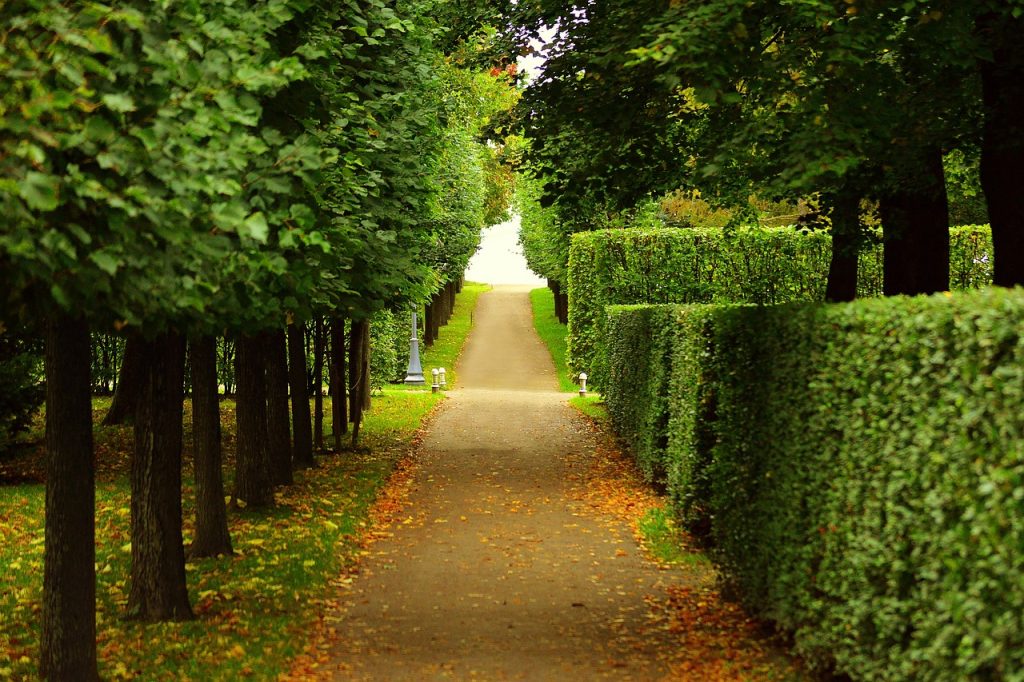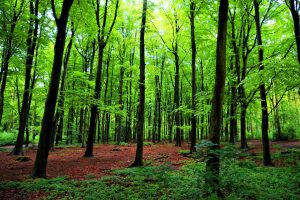Is Tree and Shrub Service Worth It?
Is Tree and Shrub Service Worth It? Exploring the Benefits of Professional Lawn and Landscape Care

Maintaining a lush and healthy lawn, along with vibrant trees and shrubs, is a goal cherished by homeowners around the world. In Utah the care of lawns, trees, and shrubs has evolved into a science-driven industry that offers a plethora of services designed to enhance the beauty and health of residential properties. Among these services, tree and shrub care have gained significant attention, and companies like Truco Services, Inc. have become leaders in the field. In this comprehensive article, we delve into the various aspects of tree and shrub services, evaluating their worth and benefits in the context of lawn and landscape care.
The Landscape of Tree and Shrub Services
The landscape of professional lawn and landscape care has evolved dramatically over the years. Gone are the days when simple mowing and occasional watering sufficed for maintaining an attractive lawn. Today, homeowners are increasingly concerned about the health and aesthetics of their outdoor spaces, leading to the emergence of specialized services like tree and shrub care.
Tree and shrub services encompass a wide range of activities aimed at nurturing and enhancing the growth of ornamental trees, shrubs, and bushes. These services typically include:
Fertilization: Providing the necessary nutrients to trees and shrubs for optimal growth and health.
Pruning: Trimming branches and foliage to promote healthy growth patterns and enhance aesthetics.
Disease and Pest Control: Identifying and addressing diseases and pests that can threaten the health of trees and shrubs.
Soil Management: Ensuring that the soil composition is conducive to plant health and growth.
Plant Health Care: Offering specialized treatments to prevent diseases and promote the overall well-being of plants.
Landscape Enhancement: Designing and implementing landscaping plans that incorporate trees, shrubs, and other plant elements.
The Benefits of Professional Tree and Shrub Care
Engaging in tree and shrub care services offers a multitude of benefits to homeowners. Let’s explore some of these advantages:
Expertise: Certified arborists and horticulturists bring their knowledge and experience to the table, ensuring that the best practices are employed for tree and shrub care.
Health and Longevity: Proper care helps trees and shrubs flourish, extending their lifespan and enhancing their overall health.
Aesthetics: Well-maintained trees and shrubs contribute significantly to the visual appeal of a property, enhancing its curb appeal.
Property Value: A beautifully landscaped property with healthy trees and shrubs can increase the value of a home.
Disease Prevention: Regular inspections and treatments can prevent the spread of diseases that can devastate plant life.
Pest Control: Early detection and intervention can prevent infestations that might otherwise be difficult to manage.
Time Savings: Hiring professionals saves homeowners the time and effort required for proper care.
Tailored Plans: Services can be customized based on the specific needs of different types of trees and shrubs.
Truco Services, Inc.: A Pioneer in Lawn and Landscape Care
Truco Services, Inc., a prominent player in the lawn and landscape care industry, has gained recognition for its comprehensive array of services. With offerings ranging from lawn care plans to tree and shrub services, Truco Services, Inc. has established itself as a trusted partner for homeowners seeking professional care.
The company’s focus on customer service and expertise has made it a popular choice among homeowners in Murray, Utah. Truco Services, Inc. offers a variety of lawn and shrub care plans designed to cater to different needs and preferences. From fertilization to pest control, the company’s services are designed to address a wide range of challenges faced by homeowners.
Cost Considerations and Value
Naturally, cost is a factor that homeowners must consider when evaluating the worth of tree and shrub services. The average cost of these services can vary based on factors such as the size of the property, the number of trees and shrubs, and the specific services included in the plan. While it’s essential to factor in the financial aspect, it’s equally important to consider the value gained from healthier and more vibrant plant life.
Customer Reviews and Satisfaction
In the age of digital connectivity, customer reviews and satisfaction ratings play a crucial role in assessing the worth of a service. Truco Services, Inc., along with other reputable service providers, often showcases customer testimonials and feedback that highlight the positive impact of their services. Homeowners who have engaged in tree and shrub care services through such companies often praise the improved health of their plants, enhanced curb appeal, and the convenience of leaving the care to professionals.
Environmental Considerations
As tree and shrub services involve the use of fertilizers, pesticides, and other treatments, environmental concerns are paramount. Responsible service providers prioritize environmentally friendly practices and may offer organic options that minimize the impact on the ecosystem.
Tree and Shrub Care: A Necessity or a Luxury?
For many homeowners, the question boils down to whether tree and shrub services are a necessity or a luxury. While these services do incur costs, they can be seen as investments in the long-term health and value of a property. Homeowners who prioritize landscape aesthetics, property value, and their own time savings are more likely to view professional tree and shrub care as a worthy expense.
Conclusion
In a world where time is precious and the desire for a beautiful and healthy landscape is strong, tree and shrub services offer an attractive solution for homeowners. Services like those provided by Truco Services, Inc. combine expertise, convenience, and environmental responsibility, making them a valuable option for those seeking to enhance the health and aesthetics of their outdoor spaces. As the industry continues to evolve, the worth of tree and shrub services remains evident in the satisfied customers, thriving plant life, and transformed landscapes they leave in their wake.
About Murray, Utah
Murray is a city situated on the Wasatch Front in the core of Salt Lake Valley in the U.S. state of Utah. Named for territorial governor Eli Murray, it is the state's fourteenth largest city. According to the 2020 census, Murray had a population of 50,637. Murray shares borders with Taylorsville, Holladay, South Salt Lake and West Jordan, Utah. Once teeming with heavy industry, Murray's industrial sector now has little trace and has been replaced by major mercantile sectors. Known for its central location in Salt Lake County, Murray has been called the Hub of Salt Lake County. Unlike most of its neighboring communities, Murray operates its own police, fire, power, water, library, and parks and recreation departments and has its own school district. While maintaining many of its own services, Murray has one of the lowest city tax rates in the state.
Neighborhoods in Murray, Utah
Murray Oakes, Grant Park, Southwood Park, Murray Park, Murray Park Restrooms, Willow Pond Park, Neighborhood Veterinary Care
Things To Do in Murray, Utah
Bus Stops in Murray, Utah to Truco Services, Inc.
Bus Stop in Murray Central Station (Bay C) Murray, Utah to Truco Services, Inc.
Bus Stop in State St @ 4801 S Murray, Utah to Truco Services, Inc.
Bus Stop in Murray North Station Murray, Utah to Truco Services, Inc.
Bus Stop in State St @ 4949 S Murray, Utah to Truco Services, Inc.
Bus Stop in Murray Central Frontrunner/Trax Station Murray, Utah to Truco Services, Inc.
Bus Stop in Murray Blvd / Vine St (SB) Murray, Utah to Truco Services, Inc.
Bus Stop in State St @ 3925 S Murray, Utah to Truco Services, Inc.
Bus Stop in State St @ 4824 S Murray, Utah to Truco Services, Inc.
Bus Stop in State St @ 5223 S Murray, Utah to Truco Services, Inc.
Bus Stop in Murray Blvd / Allendale Dr (NB) Murray, Utah to Truco Services, Inc.
Bus Stop in Murray Blvd @ 5039 S Murray, Utah to Truco Services, Inc.
Bus Stop in State St @ 4721 S Murray, Utah to Truco Services, Inc.
Driving Directions in Murray, Utah to Truco Services, Inc.
Driving Directions from Woodruff Tree Trimming and Removal to 4640 Commerce Dr, Murray, UT 84107, USA
Driving Directions from Reliable Tree Care to 4640 Commerce Dr, Murray, UT 84107, USA
Driving Directions from Tree Pro-Tech to 4640 Commerce Dr, Murray, UT 84107, USA
Driving Directions from Prestige Tree And Landscape to 4640 Commerce Dr, Murray, UT 84107, USA
Driving Directions from Excellence Tree & Landscape to 4640 Commerce Dr, Murray, UT 84107, USA
Driving Directions from Amen Trees to 4640 Commerce Dr, Murray, UT 84107, USA
Driving Directions from Tim's Tree Care to 4640 Commerce Dr, Murray, UT 84107, USA
Driving Directions from Jordan Tree Service - Murray to 4640 Commerce Dr, Murray, UT 84107, USA
Driving Directions from Arbor Works to 4640 Commerce Dr, Murray, UT 84107, USA
Driving Directions from Diamond Tree Experts to 4640 Commerce Dr, Murray, UT 84107, USA
Driving Directions from Green Tree Arborist to 4640 Commerce Dr, Murray, UT 84107, USA
Driving Directions from TruCo Services to 4640 Commerce Dr, Murray, UT 84107, USA
Reviews for Truco Services, Inc. Murray, Utah
Emily Abercrombie
We had a great experience with TruCo! They were well priced, responsive and prompt. Michael was a pleasure to work with and gave us advice on which plants to put in where we took out our ugly old shrubs. I would highly recommend this company!!!
Michelle Turpin
TruCo Services gets 5 stars from us for customer service. We experienced a few issues with their services this last year and Rob Eccles in senior management, stepped in and immediately handled our issues. He was very committed to making sure they understood our expectations and would execute to make us happy.
Siobhan Billingsley
I work for a property management company and have the pleasure of working with Rob at a community in Sandy. He has been incredible to work with and always responds in a timely manner. He knows all the homeowners by name and address and is aware of all the "problem" areas when it comes to sprinklers. I never have to worry about following up with him because he always reaches out to provide me with an update. If you're looking to work with someone who takes pride in their job, is professional, and can solve the worst landscaping problems thrown your way, Rob is your guy. Thank you, Rob for all you do!
Jaime S.
We have used Truco at 2 of the complexes we manage, they have been great to work with. Good quality service, outstanding customer service with good communication. That's hard to find these days. I highly recommend them. Travis has been awesome to work with.
Jerusha Smart
We use TruCo for a majority of our properties and our home. While other landscaping companies we use come and go for various reasons like cost, communication issues, work performance, etc., TruCo is always consistent in price and work. Also, Rob is the best.
